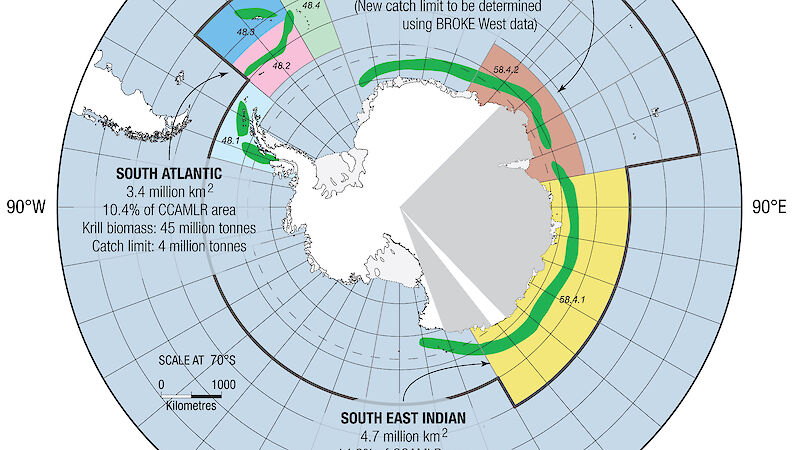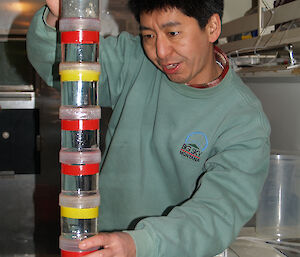One of the most comprehensive ecosystem surveys ever conducted in the Southern Ocean is the focus of a special issue of Deep Sea Research Part II: Topical Studies in Oceanography published in May.
The Baseline Research on Oceanography, Krill and the Environment-West (BROKE-West) survey, undertaken by Australian Antarctic program scientists in 2006, surveyed over 1.5 million km2 of ocean off the East Antarctic coast (between 30º and 80º east). During the 10-week voyage, scientists examined everything from ocean circulation, temperature and chemistry, to microbial communities, phytoplankton, krill and fish, as well as whales and seabirds. The main focus, however, was on the distribution and abundance of Antarctic krill, to provide information to the Commission for the Conservation of Antarctic Marine Living Resources (CCAMLR) to help manage an expanding krill fishery.The volume, edited by Steve Nicol of the Australian Antarctic Division and Klaus Meiners of the Antarctic Climate and Ecosystems Cooperative Research Centre, contains 20 scientific papers that detail the results of the survey. These include:
- demonstrating that krill and their predators were abundant throughout the survey area;
- observing an increase in temperature and salinity in bottom waters in the eastern sector of the study area;
- identifying potential sources of Antarctic Bottom Water;
- identifying pathways of carbon dioxide uptake and release by the ocean;
- observing algal blooms under the sea ice and near the ice edge that are controlled by iron concentrations.
A more detailed look at some of these results is presented in the accompanying story.
A series of 17 papers on krill biology and ecology was also published in a special issue of the journal, released in April. The papers resulted from the Workshop on krill research: current status and its future, held in Japan in 2007. Co-editor of the volume, Australian Antarctic Division krill biologist, Dr So Kawaguchi, says the research discussed in the papers includes:- studying krill at multiple spatial and temporal scales;
- studying swarm structure using the latest acoustic techniques;
- modelling approaches used to describe variability in the krill system;
- distribution, biology and ecology of krill species, from the Southern Ocean to the tropics;
- krill ageing, growth and behaviour.
Deep-Sea Research Part II publishes topical issues from the many international and interdisciplinary projects which are undertaken in oceanography, as well as collections of papers presented at conferences.


